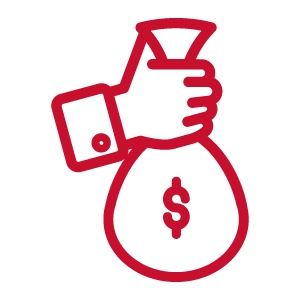
The COVID-19 Payment Pause ended on September 1, 2023. This means that in September borrowers will get their first student loan bills in nearly three years. The first bills will be due sometime in October. The bills are supposed to come at least three weeks before they are due.
You should be on the lookout for your first bill now. Your bill will tell you what your loan payment will be and when it will be due. The Department of Education also has resources on its website about preparing for student loan payments to begin again.
Take These Steps to Prepare for Repayment:
1. Check your current loan information
Log into your account at studentaid.gov to determine what kinds of federal student loans you have, how much you owe, who holds your loans, what the status of your loans is (including whether your loans are in default), what repayment plan you are enrolled in (if any), and who your loan servicer is. This information will help you understand your current situation and your options.
2. Update your contact information
While you’re in your studentaid.gov account, update your contact information to make sure you don’t miss important emails or letters about your loans. Then, log into your loan servicer’s website and update your contact information in your profile there too. Your loans may have been transferred to a new loan servicer during the pandemic, and you may need to set up a new online log-in with your new servicer.
3. See if you are eligible to have some or all of your loans canceled
Although the U.S. Supreme Court struck down President Biden’s one-time debt relief plan, there are a number of other programs that still provide some borrowers a chance to have their loans canceled or forgiven. Learn about these programs on our Cancellation & Forgiveness page. You may even be eligible for retroactive credit toward loan forgiveness through the Department of Education’s one-time payment count adjustment.
4. Get a Fresh Start on loans in default
If you have loans in default, take advantage of the time-limited Fresh Start program to remove your loans from default. Requesting a Fresh Start is fast and easy, and will make you eligible for IDR plans and other relief options.
5. Find out what your monthly payments will be and consider your payment plan options
Contact your loan servicer online or by phone to get an estimate of what your monthly bill will be in September. Too high? You can change payment plans. Use the Department of Education’s Loan Simulator Tool to find a repayment plan that works for you.
- Consider requesting an income-driven repayment (IDR) plan. An IDR plan can make your student loan payments more affordable, depending on your income and family size, and could be as low as $0 per month. For a limited time, you can enroll in an IDR plan over the phone by calling your servicer without having to fill out any paperwork. You can also apply online or using a paper form. And with the new SAVE plan, interest won’t be added to your loan balance while you’re making payments and you may be eligible to have your loans forgiven sooner!
- If you are already on an IDR plan and your income has decreased since the payment pause went into effect, consider recertifying your plan now to try to get a lower payment when repayment resumes. For a limited time, you can recertify over the phone. You can also recertify online or using a paper form.
- If you think your payment amount seems wrong, contact your servicer. It’s possible they made a mistake. You may also be able to switch plans to get a lower monthly payment amount if there wasn’t a mistake. If you still think the payment amount is wrong, you can file a complaint with the Federal Student Aid Ombudsman.
- If none of the payment plans are affordable to you, consider options to postpone your payments when the pause ends: Deferments and forbearances allow you to temporarily postpone making student loan payments when you can’t afford them. Additionally, the Department of Education announced an “on-ramp” period to help borrowers who are still struggling during the first year of repayment. From October 1, 2023, through September 30, 2024, borrowers with loans that were covered by the payment pause who miss payments during the on-ramp period will not be considered delinquent, have their loans placed in default, or be referred to debt collection agencies.
6. Make a plan for how you’ll make payments
If you want to use auto-debit, enroll or re-enroll in it through your loan servicer’s website or by contacting your loan servicer. Remember, you get a .25% reduction in your student loan interest if you sign up for auto-debit payments.
7. Consider consolidating FFEL and Perkins Loans
If you are interested in pursuing loan relief through income-driven repayment (IDR) or Public Service Loan Forgiveness (PSLF) and have a FFEL or Perkins Loans, consider consolidating those loans into a new Direct Consolidation Loan. Consolidating FFEL and Perkins loans will give you access to more IDR plans and will be eligible for the PSLF program. And if you consolidate before April 30, 2024 (updated from the original deadline of December 31, 2023), you can take advantage of the Department of Education’s one-time account adjustment to get more credit toward IDR and PSLF loan cancellation. For more on the pros and cons of consolidation, see our page on consolidating loans.